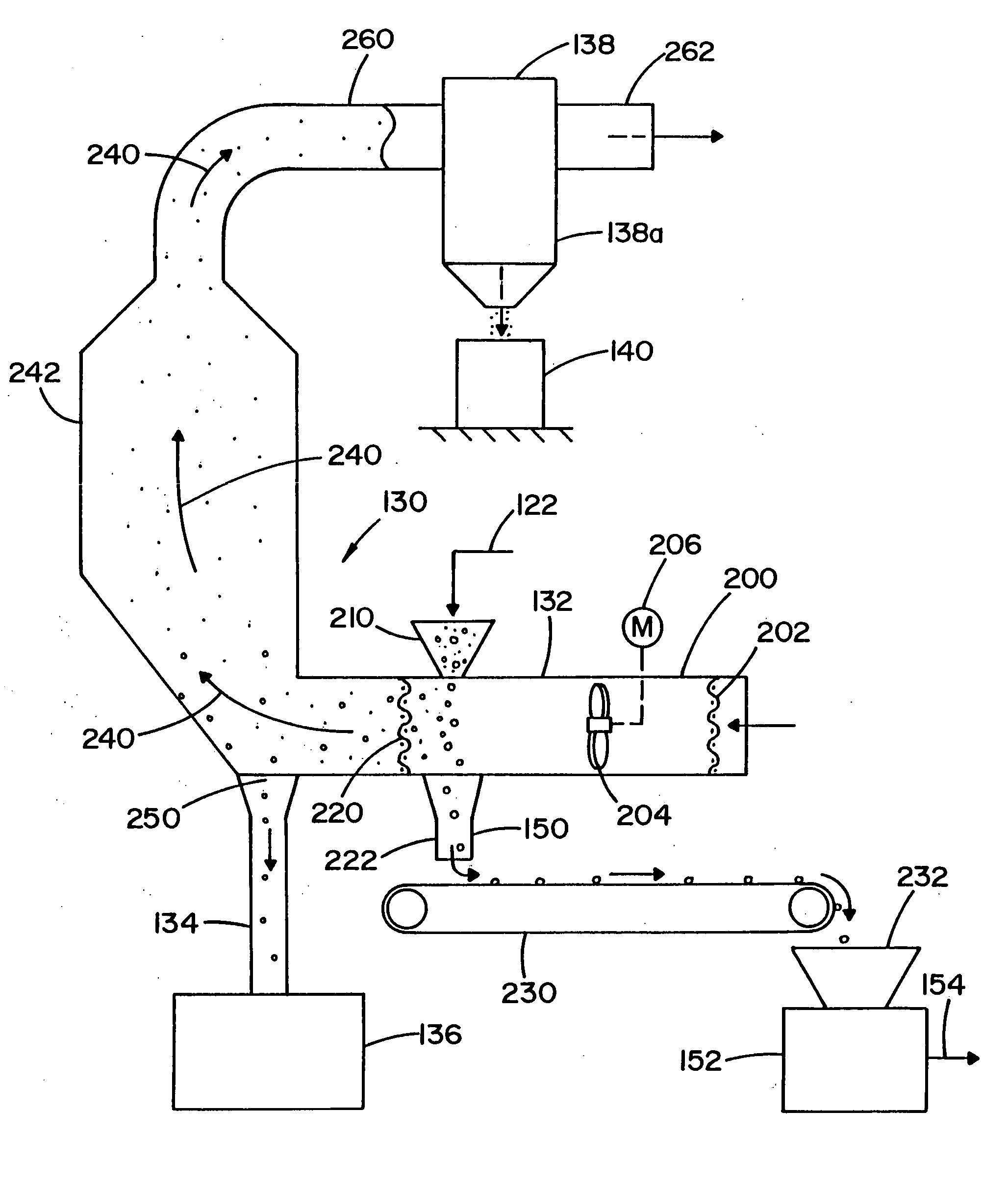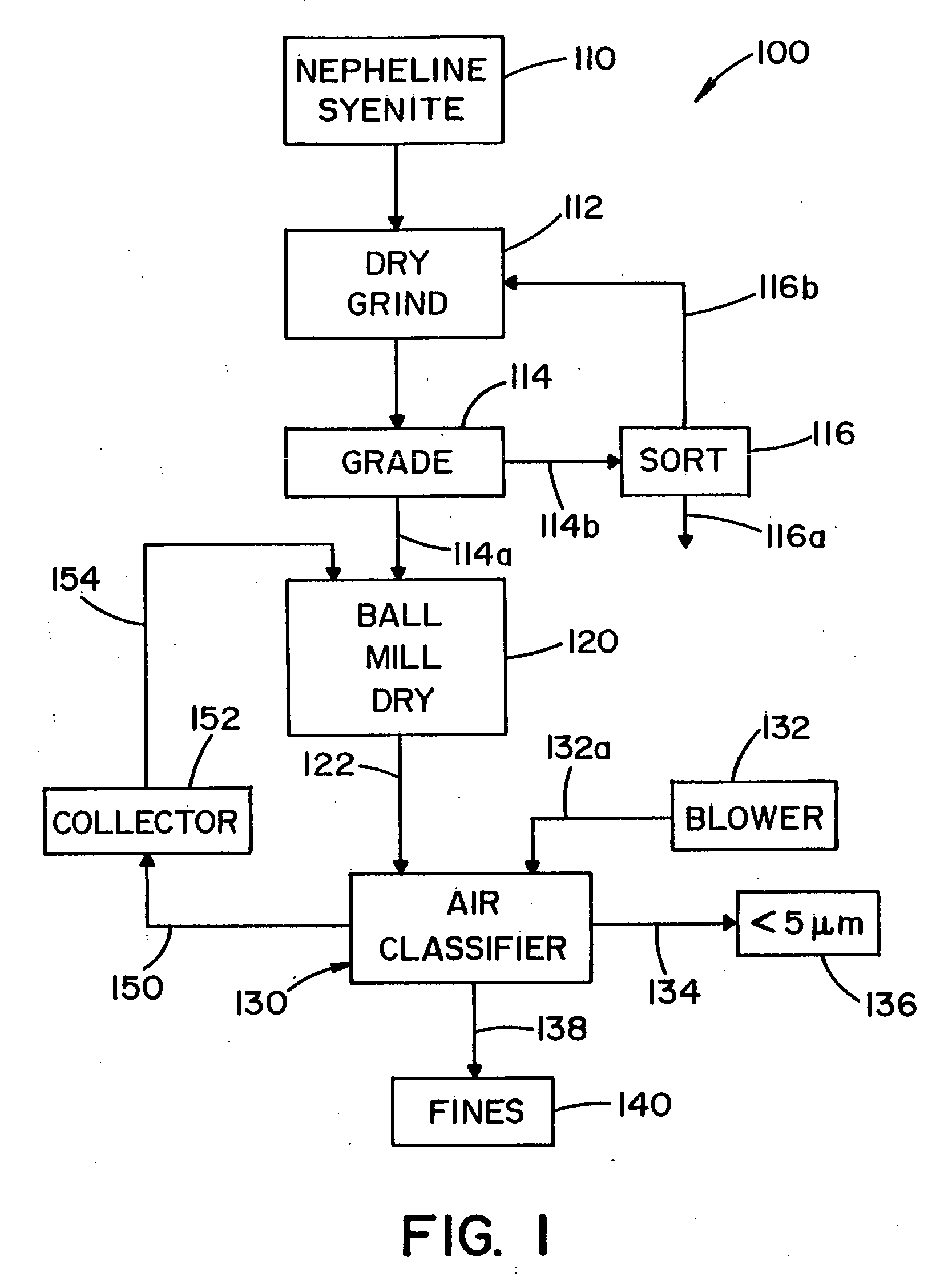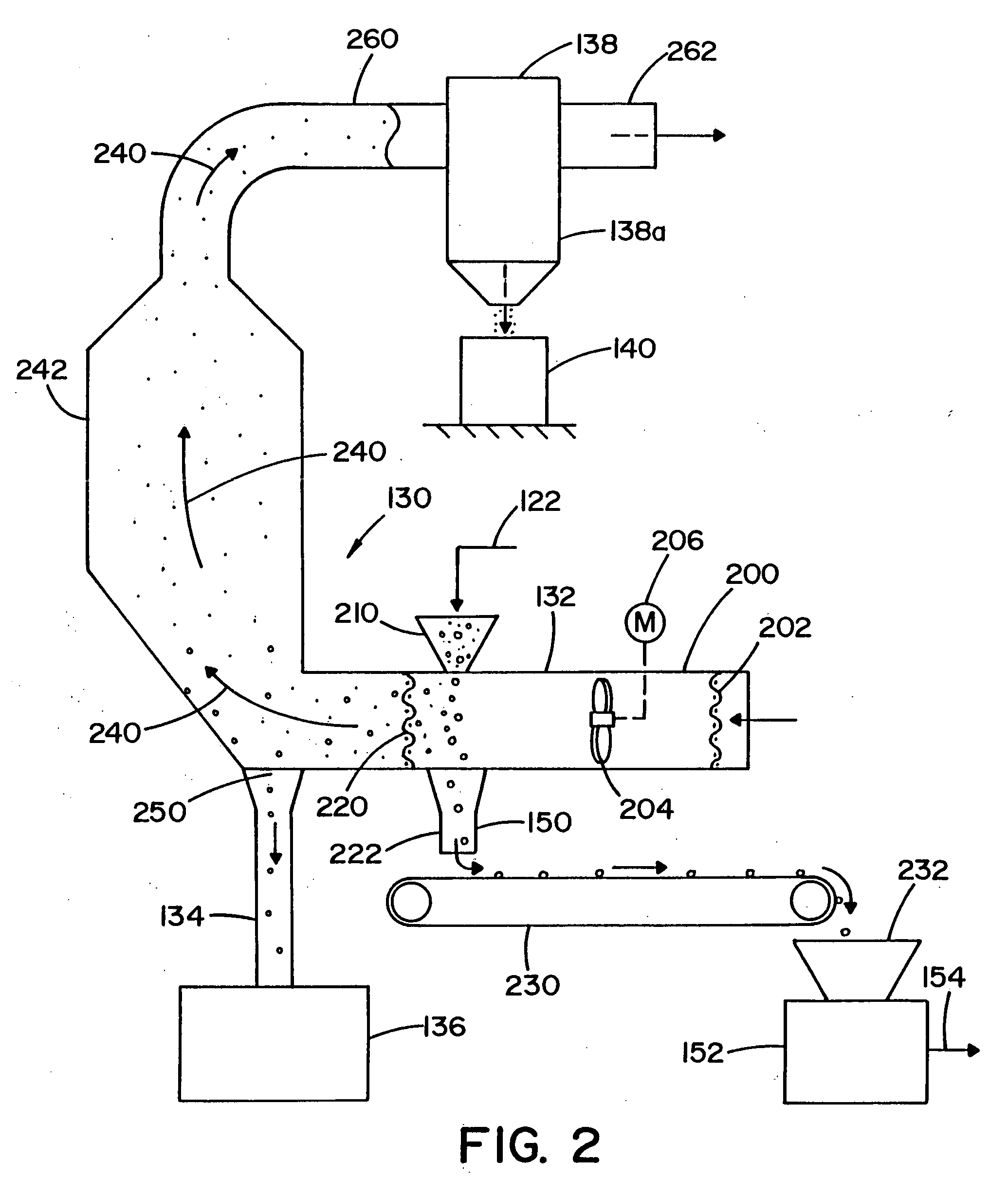Method of processing nepheline syenite powder to produce an ultra-fine grain size product
a technology of nepheline syenite and grain size, which is applied in the field of processing nepheline syenite to produce an ultra-fine grain size product, can solve the problems of reducing the production efficiency of nepheline syenite products. the effect o
- Summary
- Abstract
- Description
- Claims
- Application Information
AI Technical Summary
Benefits of technology
Problems solved by technology
Method used
Image
Examples
Embodiment Construction
[0041]Method 100 as disclosed in FIG. 1 is a general disclosure of a method to make fine grain nepheline syenite by using an air classifier schematically illustrated in FIG. 2. This method is optimized and rendered highly efficient by the present invention which involves selection of a vertical, continuous stirred ball mill as shown in FIGS. 5, 6 and 6A. This specific type of dry ball mill is combined with the dual stage classifier, as shown in FIG. 7. This invention constitutes a unique method of using a specific dry ball mill and as a secondary concept the combination of the unique ball mill with a specific classifier. The method is performed by systems illustrated in the diagram of FIG. 8. The method using this system with specific parameters constitutes the invention and FIG. 8 illustrates the preferred implementation of the novel method. The invention is the discovery that a vertically operated dry ball mill of the stirred type when combined with a specific classifier, which is...
PUM
| Property | Measurement | Unit |
|---|---|---|
| grain size | aaaaa | aaaaa |
| particle size | aaaaa | aaaaa |
| particle size | aaaaa | aaaaa |
Abstract
Description
Claims
Application Information
 Login to View More
Login to View More - R&D
- Intellectual Property
- Life Sciences
- Materials
- Tech Scout
- Unparalleled Data Quality
- Higher Quality Content
- 60% Fewer Hallucinations
Browse by: Latest US Patents, China's latest patents, Technical Efficacy Thesaurus, Application Domain, Technology Topic, Popular Technical Reports.
© 2025 PatSnap. All rights reserved.Legal|Privacy policy|Modern Slavery Act Transparency Statement|Sitemap|About US| Contact US: help@patsnap.com



